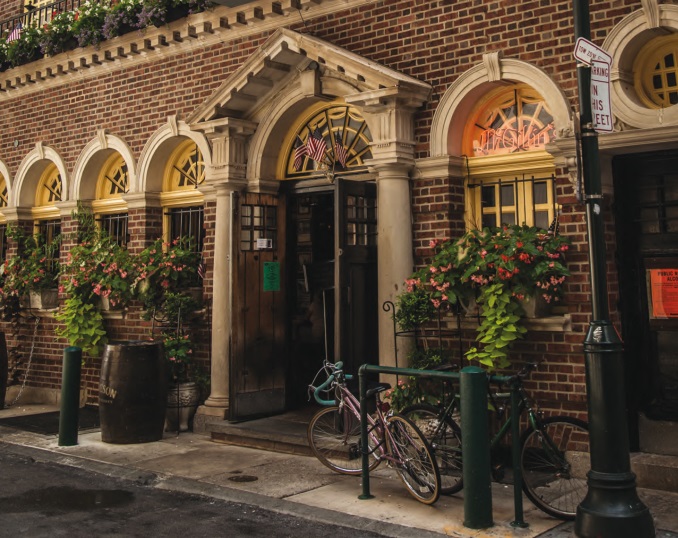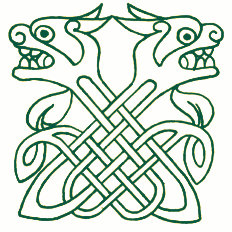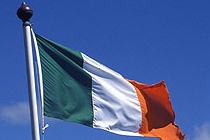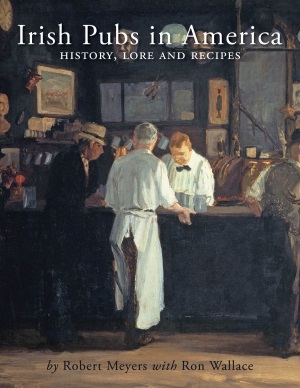Irish Pubs in America: History, Lore and Recipes - by Robert Meyers with Ron Wallace
Beer is living proof that God loves us and wants us to be happy.
– Benjamin Franklin
The Irish Public House maintains a ubiquitous presence on the American urban landscape. The Irish “Pub” stands as an island of Celtic identity, giving proof to the impact that Irish immigration has had on the American psyche. Whether one points to the immensity of America’s Saint Patrick’s Day celebrations, the stunning surge in attendance in recent years at Celtic festivals across North America or simply to the Irish Pub, there is no question that a strong Celtic strain of cultural ethnicity is inextricably mixed with the European American identity. The Irish Pub is considered by many to be a cultural institution, a conjurer’s image of refuge from the confusion of the 21st century. A place that preserves a time and a way of life that is now almost forgotten. An anchor in a fractured and changing American ethnic landscape which affords comfort from a rapidly changing mosaic of cultural influences.
Review of "Irish Pubs in America" by Robert Myers with Ron Wallace
“Irish Pubs in America”, by Robert Meyers with Ron Wallace, is lushly illustrated, meticulously researched and shows a respect for the subject matter. This is a one-of-a-kind coffee table book which features more than 50 Irish Pubs throughout America. It is a work that deals in the currency of iconographic imagery and reflects the regard the authors possess for the subject matter. Meyers and Wallace have opened a window into the Irish Pub, a low door in the garden wall exposing a path that goes a long way towards capturing the essence of the American version of the Celtic Public House. In a recent interview the author states:
We logged 50,000 air miles and performed hundreds of interviews with Pub owners. We quickly found out we didn’t just want to highlight the most famous Pubs. Instead it was the people, history and the buildings themselves that distinguish them as truly distinctive.
Meyers emphasizes this point in the preface, "This book is more than a survey of Irish Pubs. It is a tribute to Irish culture and the contributions that the Irish have made to the United States."
Indeed, it is frequently the staff that will set one Pub above the other. We caught the gracious Vicky Kelly, Manager of Tir na nOg (Land of Youths in Gaelic) Irish Pub and Grill, a busy Manhattan venue featured by Meyers and Wallace and which is steps from New York City’s Penn Station. Born in Dublin, Miss Kelly was sponsored by the Pub’s owners, whom she describes as three former Rugby players from Limerick and Kerry, to relocate to New York and manage the Pub. In response to our queries, Miss Kelly responded with warmth and wit, the qualities one imagines are sought from the staff at an Irish Pub:
I would consider myself an ambassador of Irish culture, as every Irishman would do on coming out (from Ireland) to the States.
Kelly describes Tir na nOg as an “Old School Irish Bar” and the clientele as largely Irish American and speculates that, “They feel more Irish being here".
It is the Irish, through sheer numbers alone, who have made the strongest Celtic imprint on the culture and psyche of North America. The Celts of Ireland were always a presence in the British colonization of North America. Ironically it is estimated that a third of the British Army that was defeated in the American Revolution was comprised of Irish recruits. Indeed Philadelphia was the second largest English speaking city in the British Empire on the eve of the revolution. But it was the unspeakable horror of the Potato Famine which triggered a tidal wave if Gaelic refugees flooding into North America in the 1840's which was then reinforced by a second and final tide of Irish immigrants at the turn of the 20th century.

It was the Potato Famine, "The Great Hunger" that led to the founding of McGillin’s Old Ale House in Philadelphia which is featured in the book and which is reputed to be the oldest continuously operated Public House in the city. Christopher Mullins, the current proprietor of McGillin's, who along with his son operates this successful busy venue, cites his descent from the Famine Irish and when we spoke to this affable Publican he said without hesitation that his identity was “American first but always Irish”. Reflecting the solid research and artful presentation Meyers and Wallace bring to “Irish Pubs in America”, the founding of McGillin’s is described as follows: “William “Pop” McGillin emigrated from County Tyrone during the Great Potato Famine in the mid 1800’s and set up his tavern in a small row house. He and his wife Catherine lived upstairs with their thirteen children”. The artfully constructed article on McGillin’s includes an image of the April 7, 1933 front page of the Philadelphia Inquirer under the headline declaring the end of the ill fated “Prohibition” and there under the headline is a photo of the patrons at McGillins hoisting their pints.
The stereotypical image of the Irishman dancing a jig with pint in hand whilst thrusting witticisms and playful barbs into the air belies the profound culture of Ireland that accompanied the Irish immigrant.

Along with the Irish immigrant came the legacy of thousands of years of high Celtic culture under the Druidical orders. The passengers on board the immigrant ships bore the imprint of a complex and profound pre-Christian mythology which was absorbed into Irish Catholicism by the feverish soldiers of Saint Patrick. The Irish brought a beguiling mastery of the spoken and written word that one would expect from a people who boast of the oldest written vernacular language of Europe after Greek and Latin. Perhaps above all they came with an innate sense of justice reflecting the ancient Brehon laws which were first codified in 438 AD and which governed Ireland as the law of the land until swept away in the repeated rape of Ireland at the hands of the English. These are the gifts that the Irish brought with them to North America on the Coffin Ships fleeing The Great Hunger. These are the elements that form the foundation of Irish American culture. And it is this legacy that is reflected, to one degree or another, in the well written and immensely entertaining “Irish Pubs of America”.
Mr. Mullins, the proprietor of McGillin’s Old Ale House in Philadelphia, descended from Famine Irish and a self proclaimed Irishman, described Mr. Meyers and Mr. Wallace as “affable intellects”. This is high praise from any quarter under any circumstances but high praise in deed from a Celtic Publican.
The distinguished authors, Robert Meyers and Ron Wallace, have each enjoyed hugely successful careers in business and we at Transceltic are grateful that both men have turned to writing in their later years. Meyers is a former Vice President at Scientific Atlanta now part of Cisco Systems and is the former Director of International Affairs at Allied Signal, now part of the Honeywell Corporation. In addition, Mr. Meyers has served in the United States Foreign Service and in the Carter White House. Mr. Wallace is the former president of UPS International. Both men are accomplished Authors, Mr. Meyers having penned “Bygone Treasures and Timeless Beauties: Barns of Old Milton County” and Mr. Wallace is the author of “The Power of the Campaign Pyramid”, released in 2012, a book about organizing political campaigns and this year will release “What Brown Did for Me.”
Find out more
For more information on the book and how to purchase visit: www.irishpubsbook.com
- Irish
- English
- Log in to post comments








